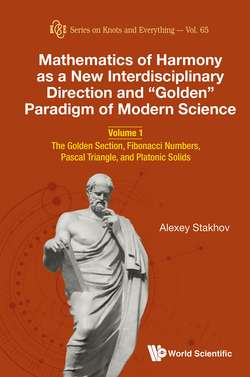Читать книгу Mathematics of Harmony as a New Interdisciplinary Direction and “Golden” Paradigm of Modern Science - Alexey Stakhov - Страница 13
На сайте Литреса книга снята с продажи.
Fibonacci Numbers
ОглавлениеThe Fibonacci numbers, introduced into Western European mathematics in the 13th century by the Italian mathematician Leonardo of Pisa (known by the nickname Fibonacci), are closely related to the golden ratio. Fibonacci numbers from the numerical sequence, which starts with two units, and then each subsequent Fibonacci number is the sum of the two previous ones: 1, 1, 2, 3, 5, 8, 13, 21, 34, 55, . . . . The ratio of the two neighboring Fibonacci numbers in the limit tends to be the golden ratio.
The mathematical theory of Fibonacci numbers has been further developed in the works of the French mathematicians of the 19th century Binet (Binet formula) and Lucas (Lucas numbers). As mentioned above, in the second half of the 20th century, this theory was developed in the works of the Canadian geometer, Donald Coxeter [7], the Soviet mathematician, Nikolay Vorobyov [8], the American mathematician, Verner Hoggatt [9] and the English mathematician, Stefan Vajda [11], the outstanding American mathematician, Donald Knuth [123], and so on.
The development of this direction ultimately led to the emergence of the Mathematics of Harmony [6], a new interdisciplinary direction of modern science that relates to modern mathematics, computer science, economics, as well as to all theoretical natural sciences. The works of the well-known mathematicians, Coxeter [7], Vorobyov [8], Hoggatt [9], Vaida [11], Knuth [123], and others, as well as the study of Fibonacci mathematicians, members of the American Fibonacci Association, became the beginning of the process of Harmonization of Mathematics [68], which continues actively in the 21st century. And this process is confirmed by a huge number of books and articles in the field of the golden section and Fibonacci numbers published in the second half of the 20th century and the beginning of the 21st century [1–100].
